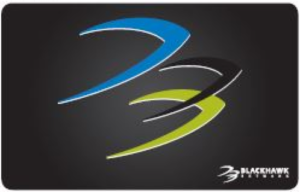Offering better flexibility and efficiencies than checks and other outdated options, prepaid cards can save businesses money, reach more people and provide unparalleled versatility
By Theresa McEndree, Head of Global Marketing and Brand, Blackhawk Network

Many US businesses issue incentives and disbursements via checks or other outdated methods. But doing this can be expensive, clumsy and ineffective. Moreover, peoples’ spending habits, payment preferences and lifestyles are evolving rapidly, and past rewards are being left behind. Now is the time to modernize disbursement, incentive and reward programs to offer people optimal flexibility, convenience and satisfaction—while saving you money and driving desired behaviors.
Although they’ve been around for years, prepaid cards became go-to lifelines for millions during the pandemic, evident by the fact that they were widely used as tools to distribute relief assistance and as ways to reward and incentivize employees in new remote workplace arrangements. Many people bought prepaid cards for themselves in the past year to more easily shop via non-physical channels, like online or via a mobile wallet. And their popularity is only gaining momentum.
Prepaid rewards are flexible, valued
Prepaid disbursements and rewards are redeemable where major processing networks are accepted. They’re also incredibly flexible. Need proof?

- People appreciate prepaid rewards from their employers. Blackhawk Network research[1] found 78% of respondents cited prepaid rewards as their number one choice for workplace rewards regardless of the occasion, their role within the company or the industry in which they worked. Prepaid cards beat out all other reward options typically offered.
- Retailers use prepaid cards as promotional tools. Blackhawk research[2] found that 79% of American respondents who received a prepaid card from a retailer as part of a promotion would want to shop with that brand more often, and 77% said they would spend more. More than three-quarters of Americans surveyed feel increased loyalty to retailers that issue prepaid rewards.
- B2B channel managers trying to boost engagement and mindshare with indirect sales partners offer prepaid rewards when their partners support their brand(s). But resellers, distributors and other channel partners are consumers that appreciate the flexibility provided by prepaid cards.
Why prepaid cards matter
Businesses and other organizations aiming to satisfy peoples’ payment preferences and drive operational efficiencies can (and should) lean on prepaid cards because:

- Checks can be exclusionary. Approximately 25% of US households are unbanked or underbanked,4 a large number including younger generations. These consumers often have to cash checks via financial services options outside the banking system. This process usually comes with hefty fees that negate part of the check’s value. Prepaid cards can give people full access to their disbursements and rewards without expensive fees.
- Prepaid cards come in digital and physical form—and are fast. Prepaid rewards and disbursements can be delivered via mail or digitally. Digital distribution can take as little as just hours—quickly putting cards in recipients’ hands—and both types of prepaid cards can be spent soon after receiving them. With cards top-of-mind and handy, people are more likely to use their rewards and disbursements—reinforcing and helping drive repetition of desired behaviors.
- Prepaid cards facilitate multi-channel spending. Physical and digital cards are redeemable in stores and online and often via mobile and retailers’ apps. This allows simpler and more seamless shopping experiences. The majority of other reward and disbursement options offer limited—if any—spending options to empower people with easy access to a multitude of choices that fit their preferences and spending habits.
- Employees love (and are motivated by) prepaid. Research3 found that half of Americans surveyed would like to receive prepaid rewards from their employers. Respondents reported that receiving a prepaid reward from their employer would cause them to feel motivated to work harder (81%), more loyal toward their employer (81%), and valued (86%). Prepaid rewards would make 79% of those surveyed want to stay with the company.
- The right rewards can drive future sales. People are more likely to use prepaid rewards and remain connected to the company that issued them3. This keeps the brands issuing the rewards top of mind and creates regular customer touchpoints that can provide valuable customer insights and drive engagement. The more engaged customers are, the more receptive they are to up- and cross-sell opportunities.
- Checks and other monetary incentives are expensive to issue. For example, research from MetaBank[3] found that paper checks can cost businesses up to $3.15 per check issued, plus the value of the check itself. These expenses are incurred when checks are cut, printed, mailed—and when organizations have to re-issue checks that are lost and follow up when checks aren’t cashed. Seemingly incremental, these costs quickly add up and may even exceed the reward or disbursement amount.
Prepaid cards help organizations streamline incentives and disbursement programs to deliver faster and more powerful rewards to employees, channel partners and customers—while driving cost savings. People appreciate the value prepaid cards provide—not just monetarily—and expect modern payment options in today’s fast-paced world. Using prepaid rewards and disbursements is a win-win for organizations and Americans alike.

Theresa McEndree is currently Head of Global Marketing and Brand at Blackhawk Network and was formerly VP Marketing with the company. Based in Dallas, she leads a global marketing group supporting brand, demand, product marketing, field marketing, corporate communications, events and creative. She previously served in VP Marketing roles at Parago, FreedomPay, and Ecount.
Related PaymentsNEXT coverage:
Virtual cards, faster repayments, easy use top corporate payment acceptance priorities
Earned Wage Access companies tackle CA consumer regulation
[1] The “Global Rewards Preference” study is an internet-based study conducted by Isometric Solutions on behalf of Blackhawk Network in March, 2021. The sample size included 600 Australian, Canadian, US and UK adults ages 24-65.
[2] “BrandedPay: How People and Brands Connect Through Payments” is based on the findings of an internet-based survey conducted by Leger on behalf of Blackhawk Network between February 12 and March 17, 2020. The sample size included over 12,000 respondents in eight countries.
[3] 2019 Study of Consumer Payments Preferences is an internet-based survey conducted independently by YouGov on behalf of MetaBank in May 2019. The sample size included 1,214 US adults ages 18+. The figures have been weighted and are representative of all US adults (aged 18+).
[4] “Unbanked” is a survey completed by Morning Consult in August 2021.







LET’S CONNECT